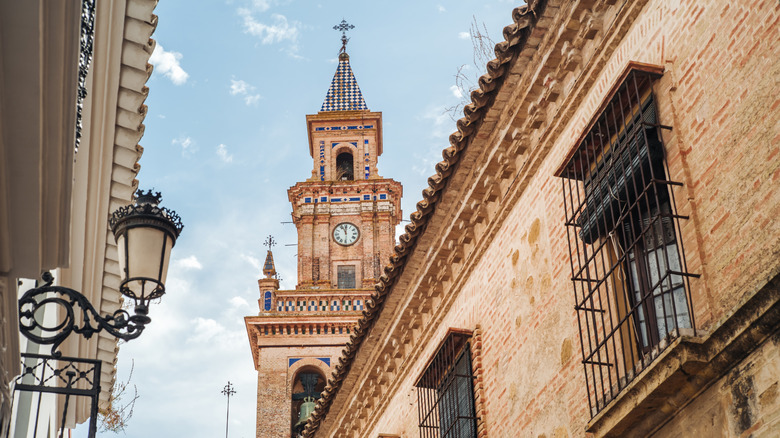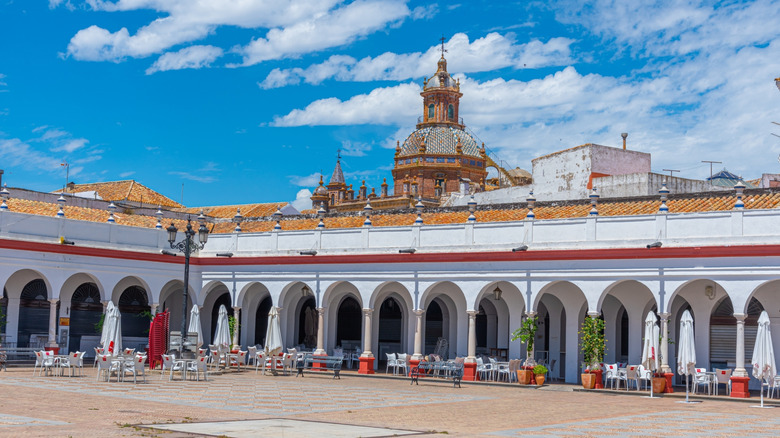A Small Town Known As Europe's 'Bright Star' Has Impressive Landscapes With Scenic Views
Andalusia is the stunning gem of southern Spain, a magnificent region of jagged mountains, gorgeous coastline, and picturesque whitewashed towns clinging precariously to cliffs. It is a fabulous cultural and historical melting pot, a region defined, influenced, and fought over by powerful civilizations for centuries, and one that retains the personalities, traditions, and styles of both, stamped into its architecture, food, and customs. It boasts breathtakingly beautiful landscapes, picture-perfect towns and villages, incredible historic sites, and mouthwatering cuisine, and is one of the best vacation destinations in Spain, if not the whole of Europe.
The whitewashed mountain villages known as pueblos blancos (white villages) of Andalusia are world-famous, and a road trip along this storied route is a wonderful way to immerse yourself in the culture of southern Spain. From the stunning views of Arcos de la Frontera to the imposing walls of Ronda, Andalusia's white towns are an incredible draw. However, there are plenty of other gorgeous spots worth exploring, like Carmona, referred to by Andalusian Traveller as Europe's "bright star," and one of the oldest towns on the continent.
Carmona is located around 21 miles northeast of the beautiful city of Seville, the capital of Andalusia, and one of Europe's best destinations for a warm-weather winter escape. It is an easy twenty-minute drive from Seville International Airport, which is served by routes across Europe. For travelers looking to fly direct from North America, Malaga International Airport is 120 miles away, around two hours by car, and is served by routes from New York and Montreal.
What to see in Carmona
There has been a human settlement in Carmona for over 3,000 years, and it is drenched in extraordinary history. From Carthaginians and Romans to the Muslim empire of Al-Andalus and the Christian "Reconquista," Carmona is a town of immense cultural diversity and historical interest, boasting some of the earliest and most important archaeological discoveries in Spain. The most important and fascinating of these is probably the Necropolis. Discovered in 1881, it is a mausoleum and complex of tombs dating back to the first century. The site includes temples to Eastern gods, tombs of wealthy Roman families, and even an amphitheater.
The rest of Carmona is crammed with wonderful historical attractions and ancient sites, and the Puerta Sevilla is a great place to start. The old entrance to the town combines 14th-century fortifications with the remains of the original Roman gate. Moving on, the Alcázar del Rey Don Pedro has been converted into a Parador hotel, but you can still explore the ruined terraces and fortifications. It is also a wonderful place to stay! It is also worth just wandering Carmona's ancient streets, stopping off in old churches like San Bartolomé and San Pedro, and enjoying the contrasting architectural styles and beautiful views over the plains. The San Blas neighborhood — the old Jewish Quarter — is particularly charming.
One of the highlights of Carmona is its beautiful market square, constructed on the site of an old Dominican monastery in the 19th century. The large patio in the middle is surrounded by porticoed galleries where stalls and shops once stood. These days, the market is mostly used for events and cultural happenings.
A fabulous gastronomic journey
One of the highlights of any trip to Andalusia is the chance to try its fabulous cuisine. The region has enthusiastically embraced its varied cultural influences, and the food here is a gorgeous blend of classic Spanish cooking with a North African twist. Popular delicacies in Carmona often focus on produce from the nearby mountains and include sopa de picadillo (a chicken soup), tagarnina (thistles), partridge, torrija (fried bread with honey), polvorónes (shortbread), and a chestnut stew made with cinnamon.
Carmona is blessed with some fantastic places to eat, notably La Ruta de las Tapas, a self-guided tour of some of the city's best casual eateries. These include local favourites like El Tabanco, Bar Goya, and El Molino de la Romera, where the vibe is relaxed and easygoing and the food is rustic yet exceptional.
There are also some wonderful places to stay in this delightful town. Parador is a great start, sympathetically built as part of the ancient Alcázar fortress, but there are plenty of other excellent options. These include the Convento Madre de Dios de Carmona (located in a working monastery) and the sumptuous Hotel Alcázar De La Reina, set in a traditional Mudéjar building.


